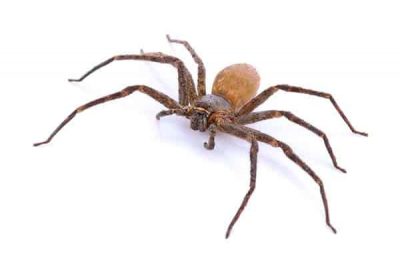Latin Name: Loxosceles Reclusa

The Brown Recluse Spider is one of the most poisonous house spiders in the United States. Its venom causes a painful sore when it bites. It is popularly called violin or “fiddle-back” spider because of the shape of its dorsum.
Brown recluse spiders usually live in indoor and outdoor spaces where people rarely visit. However, if people come to such areas, it is not enough reason to bite except they feel trapped.
Although having spiders in your home is an excellent way to control insects in your home. Yet, having brown recluse spiders in your home can be a big problem for anyone.
It has a violin-shaped area at the front half of its cephalothorax (fused head and thorax). The neck of the violin points towards the spider’s abdomen. The violin markings vary in intensity depending on the age of the spider. Mature spiders are dark brown. Although they are called brown recluses, they are not always brown but are sometimes tan.
They are sometimes bigger than the usual spider. The body size is usually between a quarter-inch to three-quarters of an inch. Another differentiating factor is that while other spiders have eight eyes, the brown recluse has six eyes arranged in three pairs around the front of their cephalothorax.
Another distinguishing feature is their uniformly colored abdomen, covered in fine hairs, giving a velvety appearance.
Brown Recluses are common in places in the Midwestern United States or South Central. Anywhere outside these areas, it is hard to see them there.
They prefer indoor spaces like garages, dark closets, and attics. Whenever they find themselves outdoors, they prefer areas like under logs, debris, within piles of rocks, and beneath porches. They are resilient enough to withstand harsh situations like winter in unheated basements, stifling temperatures in attics, and even hunger for many months.
Brown Recluse spiders move around by hitchhiking on furniture boxes and other items from infested structures.
Brown Recluse spiders eat small insects and other spiders and do not use webs to catch their prey. Instead, they use their venom to subdue them.
There are two methods they use to catch their prey – active and passive. As active hunters, they hunt during the nighttime hours. As passive hunters, they wait till they are vulnerable and close enough before they attack.
Brown Recluse spiders are also scavengers as they sometimes prefer living or recently killed prey.
Like most spiders, brown recluse spiders prefer secluded and dark corners of rarely cleaned places. They are primarily lured in by an abundance of prey insects in a place as they will consider such place as a sustainable source of food. They are challenging to eradicate, primarily because of their secretive habits. Hence, use a bright flashlight to reveal the locations and extent of the infestation. Check for places like crevices and wall-floor junctures. They also live behind walls and areas like under the bed, furniture, stored items, shoes, and closets.
Some of the apparent signs of an infestation of brown recluse spiders in your home are:
Brown recluse spiders only bite humans when they feel threatened or disturbed. The bite, which is usually painless, happens mostly when the person rolls over the brown recluse during their sleep. The victim is unaware until 3 to 8 hours later when the bite swells up, is red and tender. It produces reactions such as fever, rash or vomiting, chills, and dizziness. Severe reactions are common amongst children, elders, and patients in poor health conditions.
Preventing spiders begins with what you do outdoors. Even though having spiders in your home is a natural way of controlling pests, they feed on insects. So if you have brown recluse spiders in your home, it is a severe problem. However, with brown recluse spiders, it is more than that because of its venom when it attacks humans and pets. Hence, to control spider population outside your home, you should:
If you suspect these pests are in or around your home, give us a call for a Free Home Inspection!
Loading…
